The Ultimate Guide to Growing Autoflowering Cannabis Outdoors
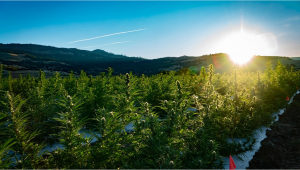
- 1. Introduction
- 2. Choosing the perfect autoflowering strain
- 3. Selecting the ideal location
- 4. Preparing the soil for optimal growth
- 5. Planting and germination
- 6. Nutrition and fertilization
- 7. Watering techniques
- 8. Pest and disease control
- 9. Training techniques for autoflowering cannabis
- 10. Harvesting and curing
- 11. Benefits of growing autoflowering cannabis outdoors
- 12. Additional tips for success
- 13. The significance of sunlight and light cycles
- 14. Expert opinion by jorge cervantes - co-author:
- 15. Extra tips for growing autoflowering cannabis outdoors
- 16. Conclusion
Preface
Embark on a journey through a lush path of outdoor cannabis cultivation with a focus on the autoflowering variety, as we explore the comprehensive guide co-authored by Enzo Schillaci and Jorge Cervantes. This article, rich with insights and detailed instructions, serves as a beacon for cultivators at every level, guiding them through the multifaceted process of growing autoflowering cannabis outdoors. From the seedling's first emergence to the final stages of harvest, this guide intertwines scientific knowledge with hands-on expertise, ensuring that your cultivation journey is navigated with confidence and proficiency.
Dive deep into the specifics of the Northern Lights Auto strain, exploring its life cycle, understanding the pivotal role of light, nutrition, and care at each stage, and garnering insights into maximizing yield and potency. From germination to the final harvest, this guide illuminates your path with practical tips and expert advice, ensuring your journey through cannabis cultivation is both enlightening and productive. The article not only provides a step-by-step guide but also addresses potential challenges and common misconceptions, ensuring a holistic and well-rounded understanding of the cultivation process.
Cannabis cultivation, especially outdoors, brings with it a unique set of challenges and controversies, such as optimal conditions, nutrient requirements, and pest control, which this guide addresses with solutions and alternatives that are both practical and actionable. It demystifies the complexities of cannabis cultivation, breaking down the process into digestible segments, making the art and science of cannabis cultivation accessible to all.
Guiding us through this exploration are Enzo Schillaci and Jorge Cervantes. Enzo, originally from Argentina and having grown up in Amazonas, Brazil, brings a fresh and insightful perspective to the table, ensuring the guide is both accurate and relatable. His global travels and experiences, coupled with his role as a full-time cannabis writer at Fast Buds autoflowering genetics, lend a modern and practical perspective to the guide. Alongside him, Jorge Cervantes, a globally recognized cannabis cultivation expert and author, brings decades of experience and a wealth of knowledge, ensuring this guide is not only informative but also deeply rooted in expertise and practical experience.
Introduction
Autoflowering cannabis plants are a game-changer for outdoor growers. These versatile plants offer high yields, quality buds, and rapid growth, making them an excellent choice for both beginners and experienced cultivators. This guide will provide you with all the information you need to successfully grow autoflower seeds outdoors and achieve the best possible results.
Choosing the Perfect Autoflowering Strain
The first step in growing autoflowering cannabis outdoors is selecting the ideal strain for your needs and environment. Autoflowering strains come in various sizes, flavors, and cannabinoid profiles. Consider the following factors when choosing your strain:
- Climate compatibility: Choose a strain that is well-suited to your local climate. Some strains are more resistant to mold, pests, and harsh weather conditions.
- Growth characteristics: Pick a strain with a manageable size and growth pattern for your outdoor space.
- Desired effects: Consider the strain's cannabinoid profile and the effects you seek, such as relaxation or focus.
- Flavor and aroma: Select a strain with the flavor and aroma that appeals to you.
Some popular outdoor autoflowering strains include:
- Northern Lights Auto
- Amnesia Haze Auto
- Blueberry Auto
- White Widow Auto
- AK-47 Auto
Selecting the Ideal Location
Once you have chosen your autoflowering strain, the next step is to find the perfect location for your cannabis plants. A suitable outdoor location should meet the following requirements:
Sunlight Exposure
Autoflowering cannabis plants require at least 12-16 hours of direct sunlight per day for optimal growth. Choose a spot with maximum sunlight exposure throughout the day, ideally with southern exposure for those in the northern hemisphere.
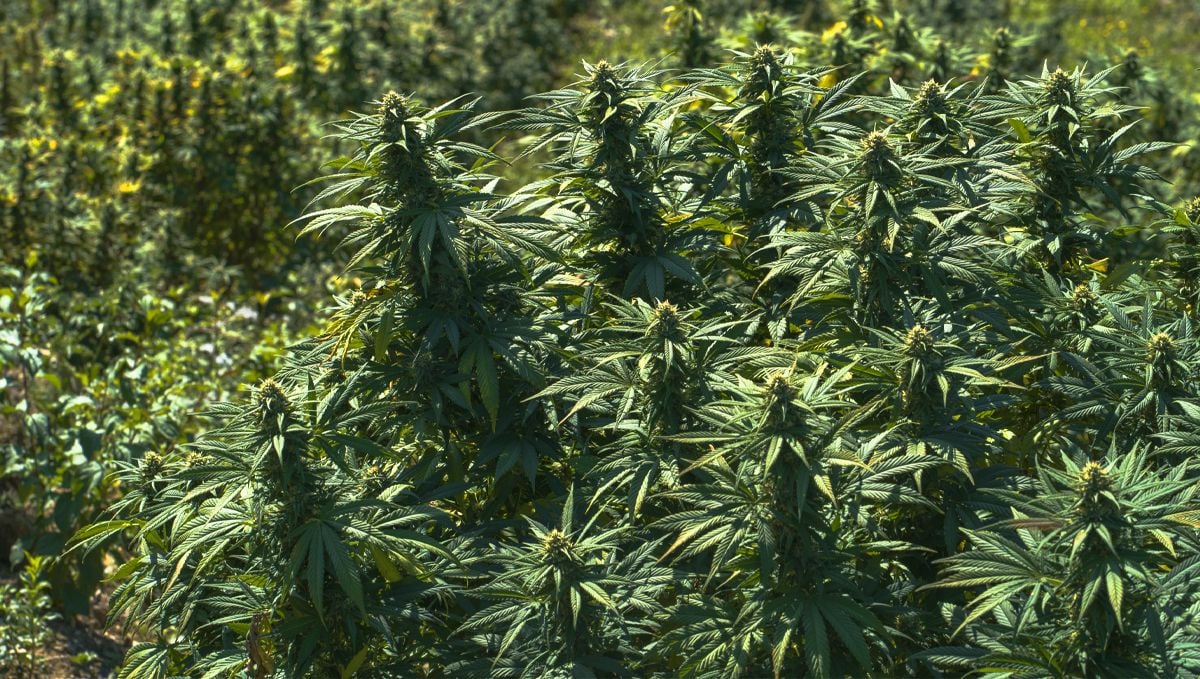
Wind Protection
Strong winds can damage your cannabis plants, causing broken branches and reduced yields. Select a location that offers some protection from the wind, such as behind a fence or a row of shrubs. You can also use windbreaks, like garden netting or temporary barriers, to shield your plants.
Privacy and Security
Growing cannabis outdoors can attract unwanted attention. Choose a discreet location that is hidden from view and difficult for others to access. Consider using camouflage techniques, such as growing your plants among other tall plants or installing privacy screens.
Preparing the Soil for Optimal Growth
Healthy, well-prepared soil is essential for the successful growth of autoflowering cannabis plants outdoors. Follow these steps to create the ideal soil environment for your plants:
Soil Composition
Cannabis plants thrive in well-draining soil with a rich organic matter content. Aim for a soil mix that is composed of:
- 40% peat moss
- 10%% compost or well-aged manure
- 20% perlite or vermiculite
- 30% coco coir
This mix ensures proper drainage, nutrient retention, and aeration.
Soil pH
Autoflowering cannabis plants prefer slightly acidic soil with a pH between 5.5 and 7.0. Use a soil pH test kit to determine the pH of your soil. If necessary, adjust the pH using a pH Up solution (to raise pH) or a pH Down (to lower pH).
Preparing the Planting Site
Before planting, loosen the soil in your chosen location to a depth of at least 12 inches. Remove any rocks, roots, or other debris. Mix in the prepared soil mix, ensuring that it is evenly distributed.
Planting and Germination
Autoflowering cannabis seeds can be germinated directly in the soil outdoors or started indoors and transplanted later. Here are the steps for both methods:
Direct Sowing
- Plant seeds about 0.5 inches deep in the prepared soil.
- Water the soil gently to ensure good seed-to-soil contact.
- Keep the soil moist until the seedlings emerge, usually within 5-10 days.
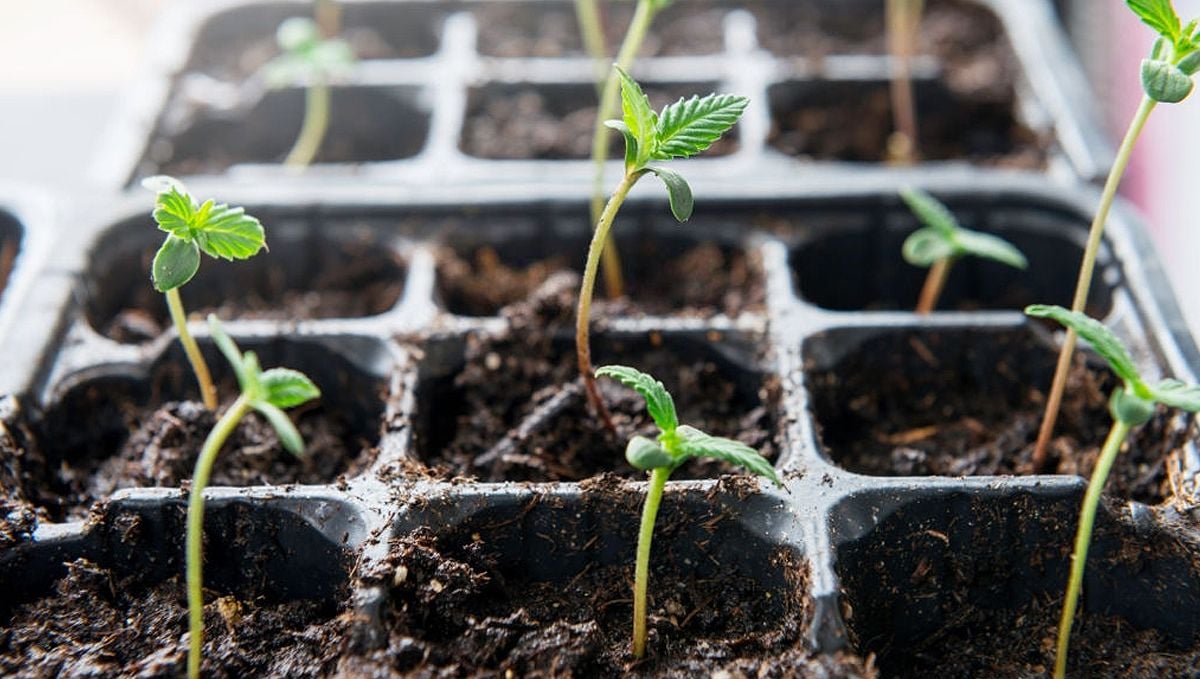
Indoor Germination and Transplanting
- Germinate seeds using the paper towel method or in a seedling tray with a humidity dome.
- Keep seedlings under 18-24 hours of light per day, using fluorescent or LED grow lights.
- Once seedlings have developed the first set of true leaves, carefully transplant them into the prepared outdoor site. Avoid disturbing the roots as much as possible.
Nutrition and Fertilization
Proper nutrition is vital for the growth and development of autoflowering cannabis plants. Follow these guidelines for feeding your plants:
Macronutrients
Cannabis plants require three primary macronutrients: nitrogen (N), phosphorus (P), and potassium (K). During the vegetative stage, provide a fertilizer with a higher ratio of nitrogen. Switch to a fertilizer with higher phosphorus and potassium levels during the flowering stage.
Micronutrients
In addition to macronutrients, cannabis plants also require micronutrients, such as calcium, magnesium, iron, and zinc. Use a well-balanced, cannabis-specific fertilizer to ensure your plants receive all the necessary micronutrients.
Organic Fertilizers
Organic fertilizers, such as compost tea, fish emulsion, and bat guano, can provide essential nutrients while improving soil health. Apply organic fertilizers according to the product's instructions and adjust based on your plants' needs.
Monitoring Nutrient Levels
Observe your plants closely for signs of nutrient deficiencies or excesses. Yellowing leaves, slow growth, and weak stems can indicate nutrient imbalances. Adjust your feeding regimen as needed to address these issues.
Watering Techniques
Proper watering is crucial for the health and productivity of your autoflowering cannabis plants. Overwatering and underwatering can both lead to problems, such as root rot and nutrient lockout. Follow these tips for successful watering:
- Water deeply and infrequently. This encourages the development of a robust root system.
- Use the "finger test" to check soil moisture. Insert your finger about an inch into the soil. If it feels dry, it's time to water. If it's still moist, wait another day or two before watering.
- Water early in the morning or late in the evening to minimize evaporation and reduce the risk of mold and mildew.
- Avoid getting water on the leaves and buds, as this can lead to mold growth.
- Consider using drip irrigation or soaker hoses to deliver water directly to the root zone, minimizing evaporation and runoff.
Pest and Disease Control
Outdoor cannabis plants can be susceptible to various pests and diseases. Implement the following preventative measures and control methods to protect your plants:
Preventative Measures
- Inspect your plants regularly for signs of pests and diseases.
- Maintain a clean and tidy grow area. Remove dead leaves, weeds, and debris.
- Encourage beneficial insects, such as ladybugs and lacewings, by planting companion plants like marigolds, yarrow, or dill.
- Install physical barriers, such as garden netting, to keep larger pests like birds and rodents at bay.
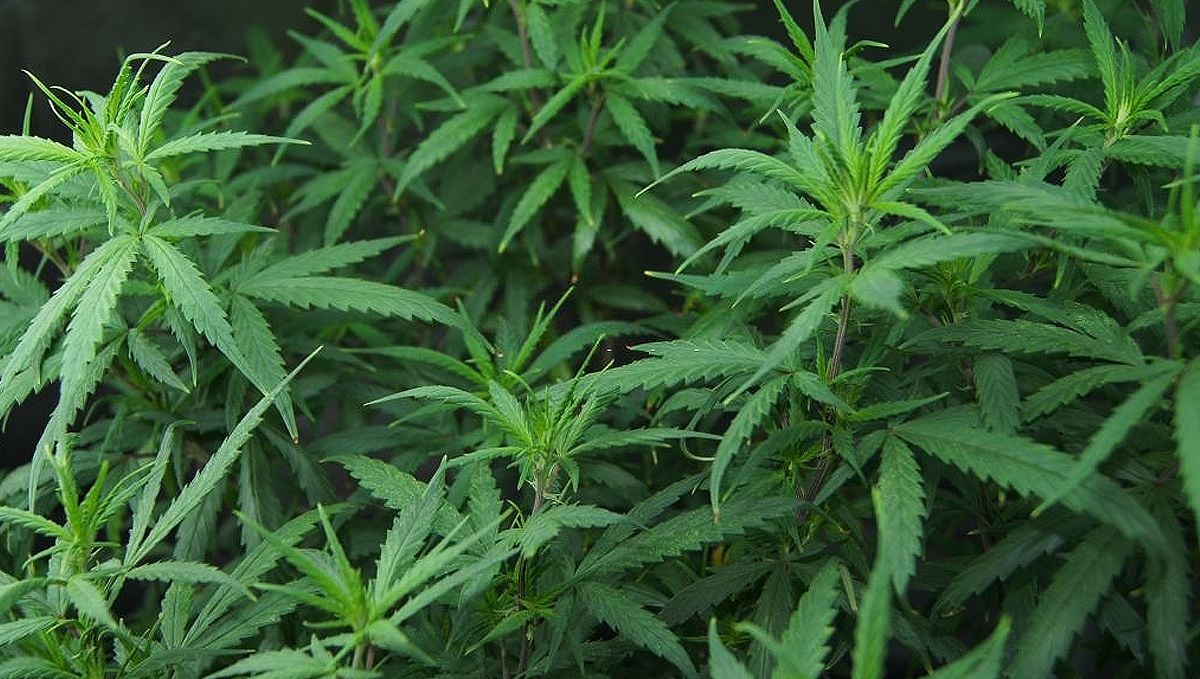
Pest Control
- Remove pests by hand or with a strong spray of water.
- Apply natural insecticides, such as neem oil, diatomaceous earth, or insecticidal soap, as needed.
- Release beneficial insects, like predatory mites, to control pest populations.
Disease Control
- Prune lower branches and leaves to improve airflow and reduce humidity around the plants.
- Apply organic fungicides, like copper-based sprays or potassium bicarbonate, or Trichoderma, to treat and prevent fungal infections.
Training Techniques for Autoflowering Cannabis
Training techniques can help improve the overall health, structure, and yield of your autoflowering cannabis plants. Since autoflowering plants have a shorter vegetative period, it's essential to use low-stress training (LST) methods that don't cause significant damage or stress. Here are some popular LST techniques for autoflowering cannabis:
- Bending and tying: Gently bend and tie down the branches, creating an even canopy that allows for better light penetration and distribution. This technique is also known as low-stress training (LST).
- Screen of Green (ScrOG): Install a horizontal screen or net above your plants and weave the growing branches through the screen, creating a flat and even canopy. This method improves light distribution and bud production.
Harvesting and Curing
Proper harvesting and curing techniques are essential for preserving the potency, flavor, and aroma of your autoflowering cannabis buds. Follow these steps to achieve the best results:
Harvesting
- Monitor the trichomes on your cannabis buds using a magnifying glass or jeweler's loupe. Harvest when most trichomes are cloudy, with some turning amber.
- Cut branches from the plant and remove large fan leaves.
- Trim away smaller leaves, taking care to preserve trichome-covered sugar leaves.
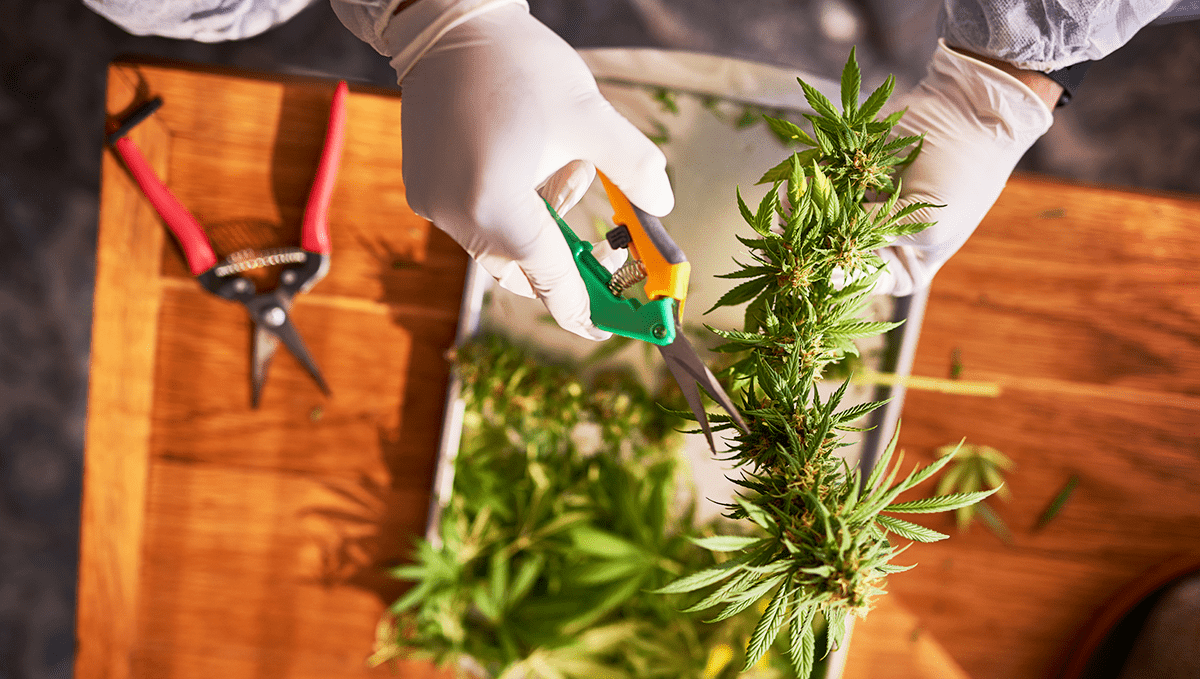
Drying
- Hang trimmed branches upside down in a dark, well-ventilated room with a temperature between 60-70°F (15-21°C) and a humidity level of 55-65%.
- Allow the buds to dry for 7-14 days, checking regularly for signs of mold or mildew.
- The buds are ready for curing when the branches snap instead of bending.
Curing
- Carefully remove the buds from the branches and place them in airtight glass jars, filling them about ⅔ to ¾ full to allow for airflow.
- Store the jars in a cool, dark place, such as a cupboard or closet.
- Open the jars daily for the first week to "burp" them, allowing fresh air in and releasing built-up moisture. This helps prevent mold growth.
- After the first week, burp the jars every few days for the next 2-3 weeks.
- Cure your buds for at least 4 weeks, although longer curing times can improve flavor and potency.
This diagram illustrates the steps involved in successfully growing autoflowering cannabis plants outdoors. Follow this roadmap to achieve thriving, high-yielding plants that produce potent, flavorful buds.
Benefits of Growing Autoflowering Cannabis Outdoors
Growing autoflowering cannabis outdoors presents several advantages over indoor cultivation. These benefits include:
- Lower costs: Outdoor cultivation requires fewer resources and equipment, such as grow lights and ventilation systems, resulting in lower costs.
- Natural sunlight: Sunlight provides a full spectrum of light, promoting robust growth, and higher yields.
- Larger plants: Outdoor plants can grow taller and wider than those grown indoors, allowing for increased yields.
- Environmental benefits: Outdoor cultivation has a smaller carbon footprint than indoor growing.
- Less maintenance: Outdoor plants generally require less daily maintenance and attention compared to indoor plants.
- Natural pest control: Outdoor gardens can attract beneficial insects, such as ladybugs, that help control pests.
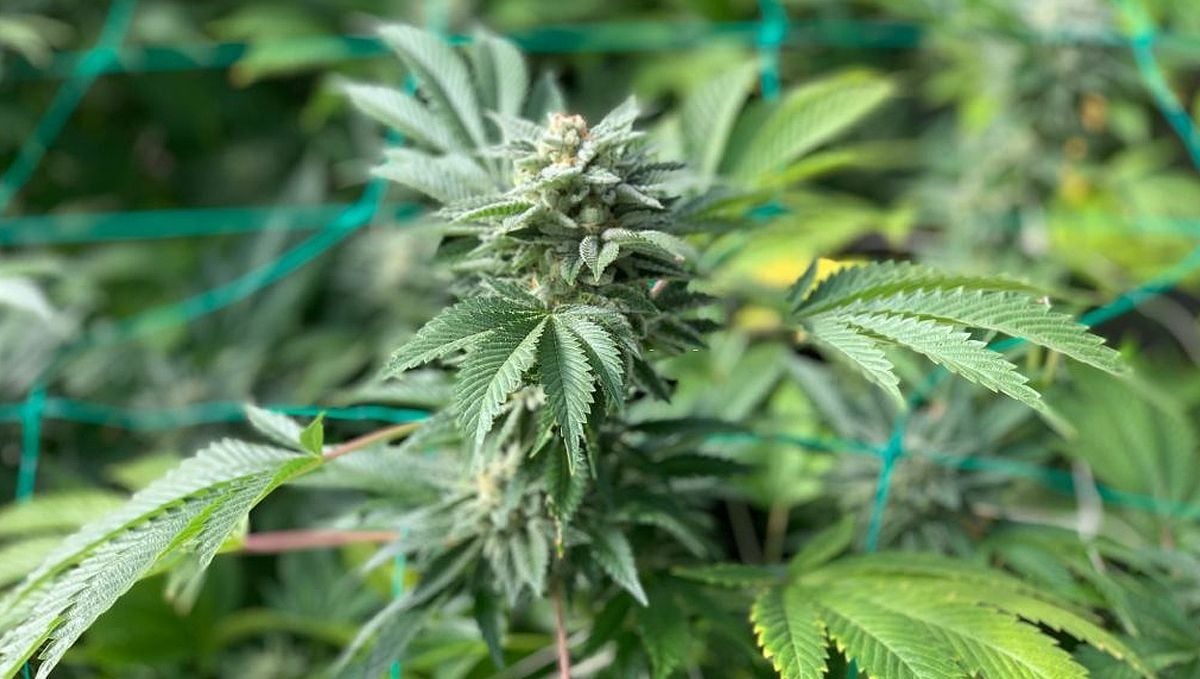
Additional Tips for Success
To further enhance your outdoor autoflowering cannabis growing experience, consider these additional tips:
- Plant in succession: To ensure a continuous harvest throughout the growing season, stagger your planting times. Start new plants every 2-3 weeks, so you'll have fresh buds ready to harvest at different intervals.
- Monitor weather conditions: Keep an eye on the local weather forecast and be prepared to protect your plants from extreme conditions, such as heavy rain, hail, or frost. Use temporary shelters or move your plants indoors if necessary.
- Maintain a grow journal: Documenting your grow process, including planting dates, strain information, feeding schedules, and any issues that arise, can help you learn from each grow and improve your techniques over time.
- Invest in quality genetics: Choose seeds from reputable breeders and seed banks to ensure you are growing quality, true-to-type autoflowering cannabis plants.
- Experiment with different strains: Each autoflowering strain has unique characteristics, growth patterns, and effects. Experiment with various strains to discover the ones that work best for your growing conditions and personal preferences.
- Stay informed and connected: Join online forums, attend local grower meetups, and stay up to date on the latest advancements in cannabis cultivation to continually improve your skills and knowledge.
By incorporating these additional tips and strategies into your outdoor autoflowering cannabis growing efforts, you'll be well-equipped to handle any challenges that arise and achieve consistently successful results.
Selecting the Right Autoflowering Strain
Choosing the appropriate autoflowering cannabis strain for your outdoor garden is essential to ensure successful growth and desired results. Consider the following factors when selecting a strain:
- Climate adaptability: Select strains that are suited to your local climate and weather conditions. Some strains are more resistant to harsh environments, while others thrive in milder conditions.
- Growing difficulty: Choose strains that match your skill level and experience as a grower. Some strains are easier to grow than others, making them ideal for beginners.
- Yield potential: Different strains can produce varying yields. Consider the potential harvest size when selecting a strain, based on your space and desired outcomes.
- Flowering time: Autoflowering strains have shorter flowering times than photoperiod plants, but there is still variation among strains. Choose a strain with a flowering time that aligns with your goals and schedule.
- Desired effects: Cannabis strains can produce different effects, such as relaxation, euphoria, or pain relief. Consider your personal preferences and desired effects when choosing a strain.
- Aroma and flavor: Cannabis strains can have diverse aromas and flavors, ranging from fruity and sweet to earthy and pungent. Select a strain that appeals to your taste and olfactory preferences.
- Cannabinoid content: Different strains can have varying levels of THC, CBD, and other cannabinoids. Choose a strain with a cannabinoid profile that meets your needs and preferences.
Choosing the Ideal Location for Outdoor Cannabis Growing
Selecting the right location for your outdoor cannabis garden is crucial for optimal plant growth and yield. Consider the following factors when choosing a location:
- Sunlight exposure: Cannabis plants require a minimum of 6-8 hours of direct sunlight per day for healthy growth. Choose a location that receives ample sunlight, preferably with southern exposure.
- Privacy: For security and discretion, select a location that is hidden from public view and not easily accessible.
- Wind protection: Protect your plants from strong winds by choosing a location with natural windbreaks, such as trees, bushes, or fences.
- Access to water: Make sure your garden is near a water source for easy access during watering.
- Drainage: Good drainage is essential for healthy root development. Avoid planting in areas prone to flooding or standing water.
- Room for growth: Consider the mature size of your cannabis plants and ensure there is adequate space for growth in your chosen location.
Preparing the Soil for Autoflowering Cannabis Plants
Healthy soil is essential for optimal cannabis plant growth. Follow these steps to prepare the soil for your outdoor autoflowering cannabis garden:
- Choose the right soil type: Cannabis plants thrive in well-draining, loamy soil with a slightly acidic pH of 6.0-7.0. You can purchase pre-mixed cannabis-specific soils or create your own blend using ingredients such as peat moss, coco coir, perlite, and vermiculite.
- Test soil pH: Use a soil pH testing kit to measure the pH of your soil. If necessary, amend the soil with lime (to raise pH) or sulfur (to lower pH) to achieve the desired pH range.
- Enrich the soil: Add organic matter, such as compost, aged manure, or worm castings, to improve soil structure, water retention, and nutrient availability.
- Incorporate slow-release fertilizers: Mix slow-release organic fertilizers, such as bone meal, blood meal, or kelp meal, into the soil to provide essential nutrients throughout the growing season.
- Prepare planting holes or raised beds: Dig planting holes or create raised beds to provide adequate space for root development and improve drainage. Amend each planting hole or raised bed with additional organic matter and slow-release fertilizers.
- Install support structures: If necessary, install support structures, such as stakes or trellises, at the time of planting to minimize root disturbance later in the growing season.
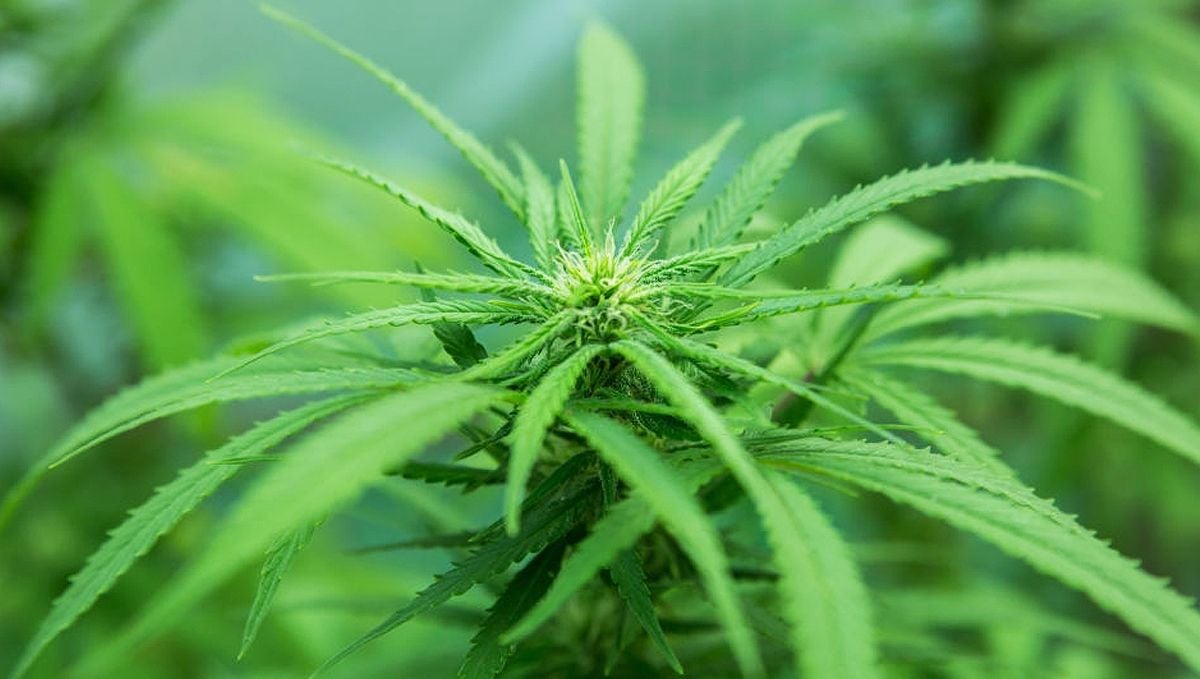
Planting and Germination of Autoflowering Cannabis Seeds
Proper planting and germination techniques are essential for successful cannabis cultivation. Follow these steps for planting and germinating autoflowering cannabis seeds:
- Pre-soak seeds: Soak seeds in water for 12-24 hours to soften the seed coat and promote germination.
- Plant seeds directly in the soil: Plant seeds directly in their final growing location to avoid transplant shock. Sow seeds ¼ to ½ inch (0.6-1.2 cm) deep, covering them lightly with soil. Water gently to moisten the soil.
- Maintain proper environmental conditions: Keep the soil evenly moist and maintain a temperature of 68-77°F (20-25°C) for optimal germination.
- Monitor seedlings: Seedlings should emerge within 3-10 days. Once seedlings appear, ensure they receive ample sunlight and maintain proper temperature and humidity levels.
Nutrition and Fertilization for Autoflowering Cannabis
Providing appropriate nutrition and fertilization is critical for healthy plant growth and development. Follow these guidelines for feeding autoflowering cannabis plants:
- Understand nutrient requirements: Cannabis plants require macronutrients (nitrogen, phosphorus, and potassium) and micronutrients (calcium, magnesium, and sulfur) for optimal growth. During the vegetative stage, plants require higher levels of nitrogen, while the flowering stage demands increased phosphorus and potassium.
- Choose the right fertilizer: Select organic or synthetic fertilizers specifically formulated for cannabis cultivation. Ensure the chosen fertilizer meets the nutrient requirements for each stage of growth.
- Follow recommended feeding schedules: Fertilizer manufacturers typically provide feeding schedules that outline the optimal nutrient ratios and application frequencies for each growth stage. Follow these recommendations and adjust as needed based on your plants' specific needs.
- Monitor nutrient levels: Regularly test soil nutrient levels using a soil test kit to ensure your plants are receiving adequate nutrition. Adjust fertilizer application rates accordingly.
- Watch for nutrient deficiencies or toxicities: Observe your plants for signs of nutrient deficiencies or toxicities, such as yellowing leaves, stunted growth, or leaf curling. Adjust your feeding regimen accordingly to address any issues.
Watering Techniques for Outdoor Autoflowering Cannabis
Proper watering is essential for healthy cannabis plant growth. Follow these tips for watering outdoor autoflowering cannabis plants:
- Water deeply and infrequently: Water your plants deeply, allowing the moisture to reach the root zone. This encourages deeper root development and promotes overall plant health. Allow the top few inches of soil to dry out between waterings to prevent overwatering and root rot.
- Use the right watering equipment: Use a watering can, garden hose, or drip irrigation system to water your plants gently and evenly. Avoid using high-pressure sprays that can damage plants and erode the soil.
- Water early in the day: Watering early in the day allows the foliage to dry out before nightfall, reducing the risk of mold and mildew.
- Adjust watering frequency based on environmental conditions: Monitor the weather and soil moisture conditions to determine the appropriate watering frequency. In hot, dry conditions, you may need to water more frequently, while in cooler, wetter conditions, you may need to water less often.
- Consider using mulch: Apply a layer of organic mulch, such as straw or wood chips, around your plants to help retain moisture, regulate soil temperature, and suppress weeds.
Pest and Disease Control for Outdoor Cannabis Plants
Protecting your outdoor cannabis garden from pests and diseases is crucial for a successful harvest. Implement the following strategies for pest and disease control:
- Practice good garden hygiene: Keep your garden clean and free of debris to reduce the risk of pests and diseases. Remove dead leaves, branches, and weeds regularly.
- Inspect plants regularly: Regularly inspect your plants for signs of pests and diseases. Early detection and intervention can prevent minor issues from becoming severe problems.
- Employ integrated pest management (IPM): Implement IPM strategies, such as biological controls, cultural practices, and physical barriers, to reduce the reliance on chemical pesticides.
- Introduce beneficial insects: Release beneficial insects, such as ladybugs and predatory mites, to help control pests naturally.
- Use organic pesticides and fungicides: When necessary, use organic pesticides and fungicides to control pests and diseases. Apply these products according to the manufacturer's recommendations and avoid spraying during hot, sunny conditions to prevent plant damage.
- Rotate crops and practice companion planting: Rotate crops and practice companion planting to disrupt pest and disease cycles and improve overall plant health.
Training Techniques for Autoflowering Cannabis
Training techniques can help improve the overall structure, yield, and health of your autoflowering cannabis plants. Consider the following methods:
- Low-stress training (LST): LST involves gently bending and securing branches to promote an even canopy and increase light exposure. This technique can improve yields without causing significant stress to the plant.
- Topping: Although topping is generally not recommended for autoflowering plants due to their short lifespan, it can be used carefully in certain situations. Topping involves removing the main growing tip to promote lateral branching and create a bushier plant structure.
- Pruning and Defoliating: Prune and defoliate lower branches to improve air circulation and light penetration. Be cautious not to over-prune or over-defoliate, as this can stress the plant and reduce overall yields.
Harvesting and Curing Autoflowering Cannabis Buds
Proper harvesting and curing techniques are essential for preserving the potency, flavor, and aroma of your cannabis buds. Follow these steps for harvesting and curing autoflowering cannabis:
- Determine the optimal harvest time: Monitor the trichomes and pistils on your cannabis buds to determine the ideal harvest time. Trichomes should be milky white with some amber, and the majority of the pistils should be dark and curled.
- Harvest your plants: Using clean, sharp scissors or pruners, cut the branches from the main stem and trim away large fan leaves.
- Trim the buds: Carefully trim the buds to remove excess leaves and stems. You can perform wet trimming (trimming immediately after harvest) or dry trimming (trimming after the buds have partially dried).
- Dry the buds: Hang the trimmed branches in a well-ventilated, dark space with a temperature of 60-70°F (15-21°C) and a relative humidity of 45-55%. Buds should dry for 7-14 days until the stems snap rather than bend.
- Cure the buds: Once the buds are dry, remove them from the branches and place them in airtight glass jars, filling the jars about ¾ full. Store the jars in a cool, dark place. During the first week of curing, open the jars daily for 10-15 minutes to release moisture and allow fresh air in. After the first week, reduce the frequency of opening the jars to once or twice a week. Continue curing for at least 4-6 weeks to develop the full flavor and aroma of the buds. For best results, aim for a curing period of 2-3 months.
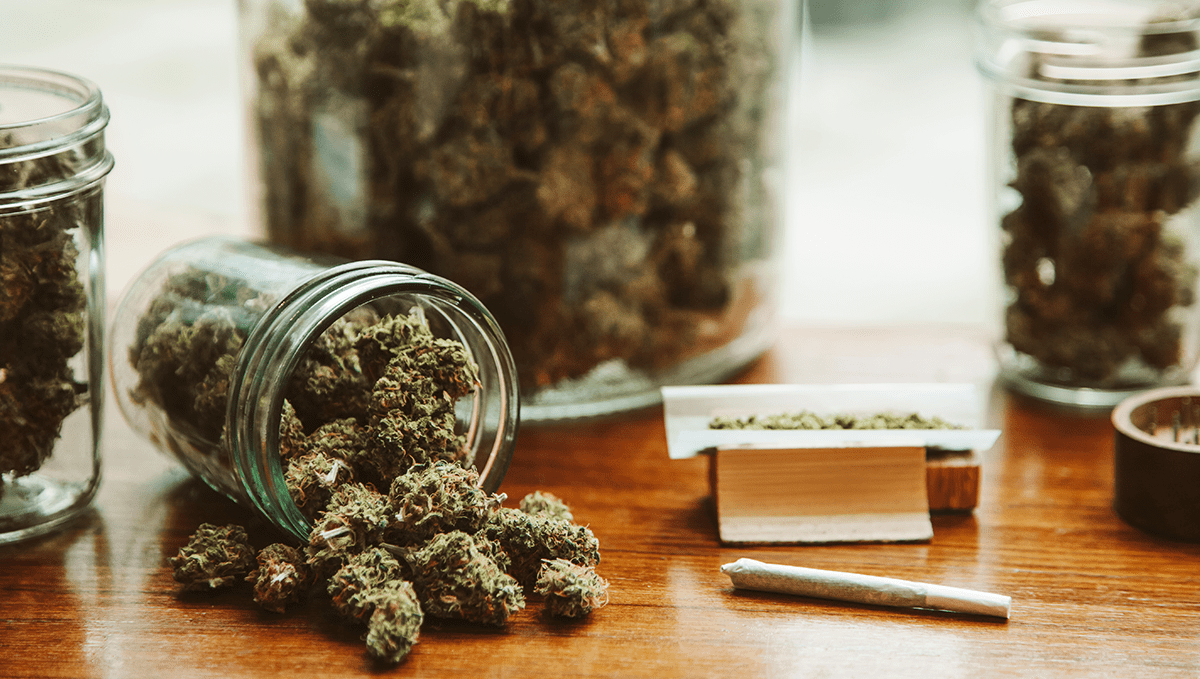
The Significance of Sunlight and Light Cycles
Sunlight plays a crucial role in the growth and development of cannabis plants. The light spectrum and duration of daylight hours influence various plant processes, such as photosynthesis, vegetative growth, and flowering.
- Photosynthesis: Cannabis plants use sunlight to produce energy through photosynthesis. Full-spectrum sunlight provides the optimal range of wavelengths for efficient photosynthesis and robust growth.
- Vegetative growth: During the vegetative stage, cannabis plants require long daylight hours to promote vigorous growth. Outdoor plants benefit from the natural increase in daylight hours during the spring and summer months.
- Flowering: Unlike photoperiod cannabis plants, autoflowering strains do not rely on changes in daylight hours to initiate flowering. Instead, they automatically transition to the flowering stage based on their age, usually after 4-5 weeks of growth. This feature allows for multiple harvests during the growing season.
Expert Opinion by Jorge Cervantes - Co-Author:
Embarking on the journey of cultivating autoflowering cannabis outdoors is an adventure of continuous learning and discovery, and this article, co-authored with Enzo Schillaci, serves as a pivotal guide in that exploration. With more than 40 years of immersing myself in the cannabis cultivation sphere, I've witnessed the evolution of growing techniques and the emergence of autoflowering strains as a popular choice among growers for their resilience and expedited growth cycles.
In my extensive experience, the key to successful outdoor cultivation lies in understanding and respecting the natural life cycle of the cannabis plant, and this article does a commendable job in elucidating that. The emphasis on selecting the right strains, understanding the nutrient requirements, and being vigilant about potential pest issues are aspects I've always highlighted in my writings and teachings. The article’s detailed breakdown from germination to harvest provides a clear and concise roadmap for growers to follow.
It’s crucial to note that while autoflowering strains are somewhat forgiving, paying attention to detail, such as optimizing the growing conditions and adhering to a nutrient schedule, can be the difference between a mediocre and an outstanding harvest. The insights provided in the article regarding the nuances of care, potential challenges, and their solutions are particularly valuable, reflecting a deep understanding of the plant and its needs.
In conclusion, the journey of growing autoflowering cannabis outdoors is one that is enriched with learning and bountiful rewards. Whether you are a novice exploring the world of cannabis cultivation or an experienced grower looking to refine your techniques, this article serves as a valuable resource. My advice to all growers embarking on this journey is to approach it with curiosity, diligence, and respect for the plant, ensuring a heavy harvest and enriching cultivation experience.
Extra Tips for Growing Autoflowering Cannabis Outdoors
- Monitor weather conditions: Keep an eye on the weather forecast and be prepared to protect your plants from extreme weather events, such as heavy rain, hail, or high winds.
- Be mindful of the growing season: Autoflowering cannabis plants have a shorter growing season than photoperiod plants. Plan your planting and harvesting schedule accordingly to maximize your yield potential.
- Consider growing in containers: Growing in containers allows for greater control over soil conditions and provides the flexibility to move plants as needed to optimize sunlight exposure or protect them from adverse weather.
- Stay vigilant against thieves and animals: Secure your outdoor cannabis garden to protect it from thieves and wildlife. Install fencing or other barriers to deter animals and consider implementing security measures, such as motion-sensor lights or surveillance cameras, to deter thieves.
Conclusion
Growing autoflowering cannabis outdoors can be a rewarding and enjoyable experience. By following this comprehensive guide, you'll be well on your way to cultivating bountiful, high-quality cannabis plants in your outdoor garden. Remember to choose the right strain, provide optimal growing conditions, and employ effective pest and disease control measures. With patience, attention to detail, and a little practice, you'll soon master the art of growing autoflowering cannabis outdoors.
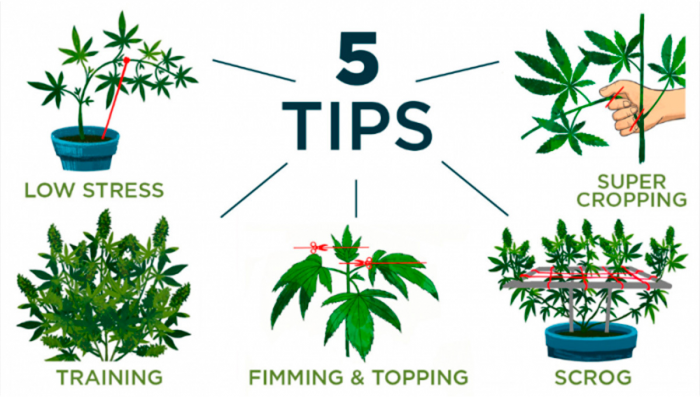







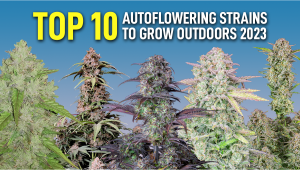
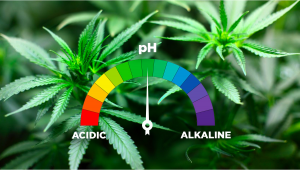
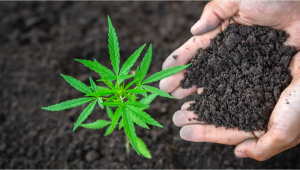
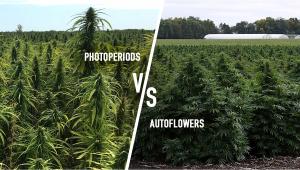
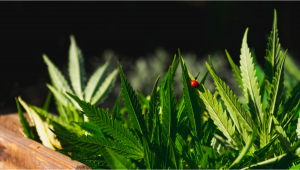
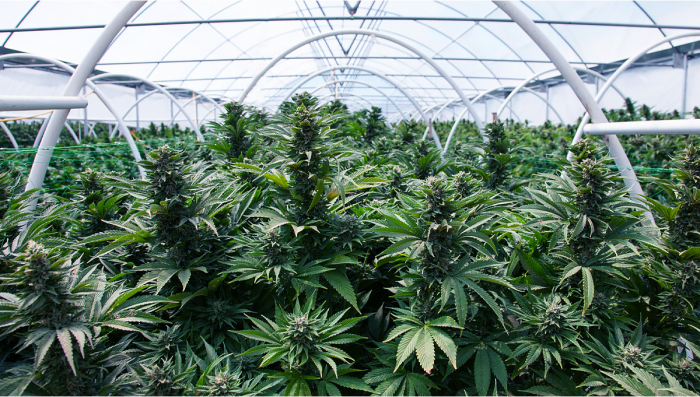

Comments